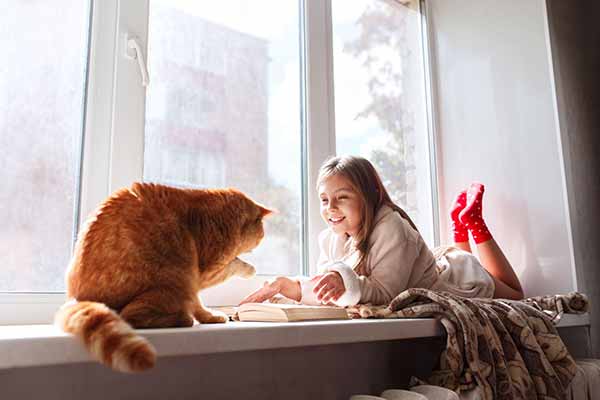Weatherization assistance programs can help low-income families manage their summer and winter energy costs. Unfortunately, folks can end up spending a significant portion of their monthly income just staying comfortable and safe. However, there’s hope for households struggling to make ends meet in the form of the Weatherization Assistance Program and the Low Income Home Energy Assistance Program.
If you’re concerned about the high energy bills resulting from your home heating and cooling needs, you may be interested in how weatherization and weatherization assistance can make a significant difference to your utility bill budget. Not just for cold winter months and the dog days of summer, weatherization measures have a year-round impact on your energy bills.
In this article, we’ll take a look at the assistance programs for weatherization services that are available to eligible households, how agencies determine your eligibility, and what the weatherization work includes.
We’ll also explain the various government and community agencies involved and fill you in on how to apply for assistance.
What Is the Weatherization Assistance Program?
The U.S. Department of Energy (DOE) Weatherization Assistance Program (WAP) helps low-income homeowners and renters reduce their energy costs. DOE and state grants pay for weatherization work to upgrade or improve the energy efficiency of single-family dwellings.
The DOE funds the weatherization program, administered at state and local levels, to reach about 35,000 low-income households each year. WAP state plans prioritize people receiving Supplemental Security Income (SSI), Aid to Families with Dependent Children (AFDC), are over 65, or those who have special needs.
Although the federal government funds the program, each state administers WAP according to its state income guidelines. In turn, state plans rely on community development and community action agencies to implement the program at the local level.
Since 1976, WAP has reached more than 7 million eligible families who have saved, on average, $283 on their utility bills every year. In addition, assistance is available to low-income homeowners and renters whose landlords agree to the implementation of weatherization services.
How Do I Apply for Weatherization Assistance Programs?
Find your state’s weatherization administrator to find out more about whether you qualify for WAP. The state’s site will provide information about the application process in your local area.
You can also contact your county’s social services department for information about applying for any weatherization or utility bill payment services they offer.
Finally, you can contact your local utility company for weatherization program information. For the hearing impaired or deaf, most agencies and utilities maintain TTY/TDD lines.
Once you’ve identified the proper social services program, community development, or community action agency for your area, contact them to begin the application process.
Naturally, there will be paperwork, and you’ll need to verify your income for the prior year. Pay stubs or benefit statements are proof of income. Your income tax return for the preceding year may also serve as proof of income.
One of the primary eligibility requirements is income-based. However, to meet the greatest need first, priority participation in the weatherization program is given to the elderly, SSI and AFDC recipients, households with a special needs person or child living there, and families that have high energy use or high energy needs.
What Is the Low Income Home Energy Assistance Program?
Another government program that helps low-income households is the Low Income Home Energy Assistance Program (LIHEAP). LIHEAP can help with heating and cooling energy costs, utility bill payments, and weatherization. LIHEAP also offers assistance with energy crises and energy-related home repairs.
Your household income must be below federal poverty income guidelines to be eligible. In January 2021, the federal poverty level for a family of four was $26,500. In addition, if a household member receives SNAP (food assistance benefits), SSI, TANF (Temporary Assistance for Needy Families), or certain Veteran Benefits that are needs-tested, they may be automatically eligible for LIHEAP.
Beware of home repair scams. Remember, you have to apply to participate in WAP or LIHEAP, and there is no fee for doing so. If you are unsure if the provider contacting you is legitimate, visit grants.gov.
What Is Considered Low Income?
In general, the maximum income for eligibility is 200% of federal poverty guidelines for your household’s size. In addition, the Department of Health and Human Services publishes annual poverty guidelines for the contiguous U.S. (including the District of Columbia), Alaska, and Hawaii.
What Weatherization Services Does WAP Provide?
The first step for assistance in weatherizing your home is an energy audit, which is a careful and systematic review of your home’s energy consumption. The DOE requires all grantees—the state or community action agency administering WAP—to conduct an energy audit.
An energy auditor will identify areas where weatherization measures will increase your household’s energy efficiency. An energy audit or home energy assessment may take as little as 30 minutes but sometimes as much as four hours to complete.
The energy auditor will thoroughly examine your home’s exterior. They’ll be looking at walls, windows, and eaves for trouble spots that could be causing air leaks into or out of the house.
Ceiling or attic insulation is another area your auditor will examine. First, they’ll look for adequate insulation and that it’s evenly distributed. They’ll also check the insulation in your wall space for the same issues. Better insulation can help keep interior temperatures regulated and save you money on heating and cooling costs.
Your auditor will also check your heating and cooling systems, as well as your water heater. Simple things such as filter replacement are easy fixes. If your system is older, it may be a candidate for replacement or upgrading. The auditor also checks the ducting to ensure there are no leaks, which means you’re losing heat and energy.
An older furnace that repeatedly cycles on and off may indicate a need to upgrade or replace your heating system. Your energy auditor will inspect your furnace from the air filter to ducting for ways to increase your heating system‘s energy efficiency.
Window glass is a significant heat exchange point, especially with single-pane windows or faulty caulking. Your auditor will decide if repairs or window replacement is necessary. The Department of Energy estimates that replacing older windows with Energy Star-rated windows can save up to $465 annually.
The auditor will inspect your attic installation if you have attic and wall spaces. They’ll be looking to ensure it’s correctly installed and evenly applied. They will also check where electrical lines come in to ensure they’re properly sealed.
The audit findings will determine the extent of your weatherization assistance and recommend the scope of work for improvements.
Home improvements for increasing weatherization efficiency include a variety of weatherization measures.
You should weatherstrip all exterior doors; doing so prevents cold exterior air from seeping into the house. Install gaskets on switch and outlet boxes.
The auditor may also recommend installing a water heater blanket. Water heater blankets help maintain water temperature, especially useful if your water heater is outside the house. If the water temperature remains more constant, the water heater won’t cycle on and off as often.
Other minor home repairs, such as caulking and sealing exterior cracks, can also help eliminate drafts. Eliminating leaks and drafts will help keep interior temperatures more constant and keep your heating system from running excessively.
Your energy auditor will determine the most cost-effective way to improve your energy efficiency, reduce your energy use, and help you realize energy savings.
Enter your ZIP Code and compare electricity rates
Does the Weatherization Program Replace Windows?
The Weatherization Assistance Program repairs or replaces windows as necessary through window replacement grants. Low-income households, whether homeowners or tenants, are eligible for window repair or replacement, depending on their energy audit findings.
How Do I Qualify for Free Windows?
There are several ways to qualify for free window replacement. As mentioned above, the Weatherization Assistance Program is one program that helps with updating or replacing your windows. State and local government agencies distribute the grant money, and you must fall within the low-income guidelines to qualify.
A SHOP grant, available to low-income homeowners who complete some or all of the work themselves, can cover the cost of window replacement. To qualify, you must demonstrate financial need and fall within income guidelines, as we discussed above.
What Is a Shop Grant?
The Department of Housing and Urban Development (HUD) sponsors the Self-Help Homeownership Opportunity Program (SHOP). HUD intends the program to help national and regional non-profits buy homesites and sell them to families at prices below prevailing market values.
In return, the buyers must perform a substantial part of the work themselves according to strict guidelines. For example, the maximum grant is $15,000, and the prospective owners must be low-income families. In addition, SHOP grant recipients must also leverage funding from other sources.
How Do I Get Grants for Home Repairs?
The Single-Family Housing Repair Loans and Grants Program, often called the Section 504 Home Repair program, is available to low-income homeowners who are 62 or older and who can’t repay a loan.
Other homeowners can apply for a loan under Section 504. The 20-year loan has a fixed 1% interest rate. Visit USDA.gov to check your eligibility.
It’s also likely your utility company may be able to help. Funded by local community action agencies, utilities use government funding to offer free energy-saving improvements to qualified customers. Contact your utility company or visit the Community Action Partnership website to find your local community action agency.
Weatherization Assistance Programs Help Homeowners and Low-Income Families
Not only do weatherization assistance programs help reduce your energy costs, but they also increase energy efficiency.
There are many assistance programs in place to help low-income families. The federal government funds the following:
- Weatherization Assistance Program
- Self-Help Home Ownership Program
- Low-Income Home Energy Assistance Program
- Single-Family Housing Repair Loans and Grants Program.
These programs all have one goal: to increase energy efficiency and improve the health and safety of low-income families.
Each state plan administers funding to community development agencies and community action agencies following state income guidelines. In turn, the agencies handle the application, granting, and work processes according to energy audit findings.
Finally, be sure to check with your local utility company. Depending on your circumstances, funds may be available to help you with your utility bills.
Brought to you by energysavings.com
All images licensed from Adobe Stock.
Featured image:



